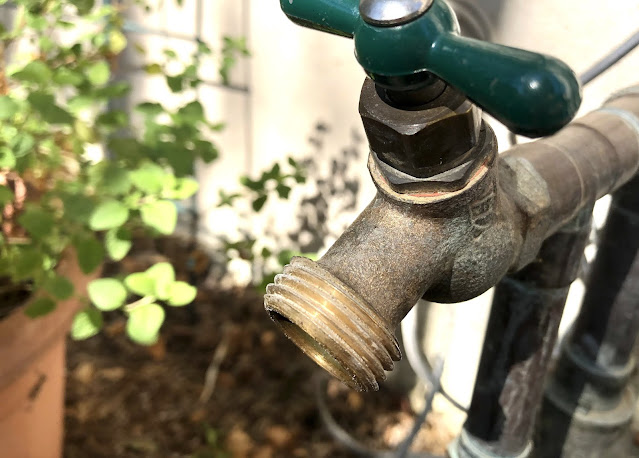
Sacramento's surprise sprinkles don't measure up

|
|
Will the rain spigot ever turn back on for Sacramento? We can hope for "real" rain next week, but the dry days keep adding up in the meantime. (Photo: Kathy Morrison)
|
Sacramento got a little surprise Wednesday morning – a few drops of rain from a quickly passing storm system.
That unexpected splash of moisture sure looked like rain and felt like rain, but – alas – it still didn’t measure on the National Weather Service’s Downtown Sacramento monitoring equipment.
So, our epic dry spell continues.
“While the sprinkles this AM were certainly welcomed, Downtown Sac again missed out on measurable rain,” tweeted the NWS Sacramento office on Wednesday. “It's now been 207 days since Downtown Sac has observed ≥0.01" of rain – an all-time record.”
Downtown Sacramento’s last measurable rain – more than 0.01 inch – fell March 19. The current dry spell eclipsed a rainless record of 194 days set back in 1880.
This is at least the 10th time Downtown Sacramento has experienced a dry spell of more than 143 days, according to the weather service. Besides 1880 and 2021, other dry spells lasting more than four months occurred in 1903 (174 days), 2002 (169 days), 1960 (162 days), 1932 (155 days), 1926 (147 days), 1924 (145 days), 1999 (144 days) and 1996 (143 days).
Not all of Sacramento has been bone-dry during our current streak. Monitoring equipment at Executive Airport did pick up 0.05 inch from an overnight thunderstorm that passed through Sept. 9-10.
When will we see “real” measurable rain? We’re certainly overdue. Historically, October averages nearly an inch of precipitation.
“Some measurable rain may be in store late next week,” tweeted the NWS Sacramento office. “Stay tuned ...”
Comments
0 comments have been posted.Sacramento Digs Gardening to your inbox.
Sites We Like
Garden Checklist for week of April 21
This week there’s plenty to keep gardeners busy. With no rain in the immediate forecast, remember to irrigate any new transplants.
* Weed, weed, weed! Get them before they flower and go to seed.
* April is the last chance to plant citrus trees such as dwarf orange, lemon and kumquat. These trees also look good in landscaping and provide fresh fruit in winter.
* Smell orange blossoms? Feed citrus trees with a low dose of balanced fertilizer (such as 10-10-10) during bloom to help set fruit. Keep an eye out for ants.
* Apply slow-release fertilizer to the lawn.
* Thoroughly clean debris from the bottom of outdoor ponds or fountains.
* Spring brings a flush of rapid growth, and that means your garden is really hungry. Feed shrubs and trees with a slow-release fertilizer. Or mulch with a 1-inch layer of compost.
* Azaleas and camellias looking a little yellow? If leaves are turning yellow between the veins, give them a boost with chelated iron.
* Trim dead flowers but not leaves from spring-flowering bulbs such as daffodils and tulips. Those leaves gather energy to create next year's flowers. Also, give the bulbs a fertilizer boost after bloom.
* Pinch chrysanthemums back to 12 inches for fall flowers. Cut old stems to the ground.
* Mulch around plants to conserve moisture and control weeds.
* From seed, plant beans, beets, cantaloupes, carrots, corn, cucumbers, melons, radishes and squash.
* Plant onion sets.
* In the flower garden, plant seeds for asters, cosmos, celosia, marigolds, salvia, sunflowers and zinnias.
* Transplant petunias, zinnias, geraniums and other summer bloomers.
* Plant perennials and dahlia tubers for summer bloom.
* Mid to late April is about the last chance to plant summer bulbs, such as gladiolus and tuberous begonias.
* Transplant lettuce seedlings. Choose varieties that mature quickly such as loose leaf.